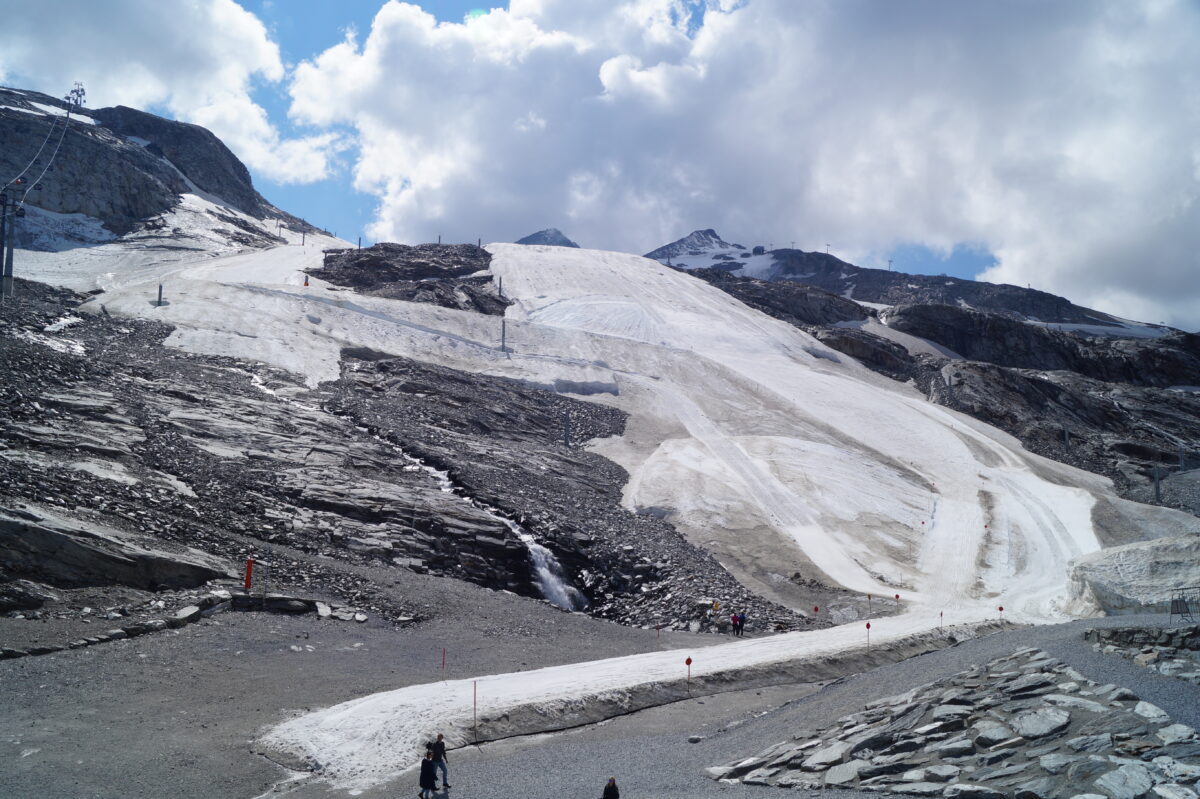
In Austria glaciers are considered a national treasure. During summer glaciers are covered with geotextiles to preserve the natural ice and snow from the winter season. That way, cost and energy expenditure for the production of artificial snow are reduced to a minimum.
The challenge
Only nine of the numerous glaciers in Austria are operated actively. The operators face the challenge to align the economic with the ecological interests. The only way to combine these interests is to protect the glaciers by means of technical devices
The solution
To date there is no comparable alternative to covering the valuable Austrian glaciers with geotextiles. The white non-woven fabrics reflect most of sun radiation (Albedo effect) and form an insulating layer on the underground due to the voluminous structure.
From a technical point of view this is the best way to conserve the snow and ice from the winter months in terms of energy efficiency. The insulating layer for the glacier ensures a smooth beginning of the skiing season without having to produce artificial snow.

On this picture you can see that we have saved approximately 4,5 m of snow from the last winter season. Right next to it, an area that had not been covered shows that the snow has melted down to the bare rocks.

“We have brought our product to technical perfection due to our long-standing experience and continued improvements in cooperation with local universities as well as operators of various glacier skiing areas.“
Michael Uebigau, Sales Manager West Austria, TenCate Geosynthetics
In the Tyrol the production of one cubic metre snow is estimated to cost 3 Euros, covering the glaciers with geotextiles costs less than 2 Euros.
Special Solution for Covering Glaciers
We use only mechanically bonded continuous filament nonwovens from 100% UV stabilised polypropylene (PP) for protecting the glaciers, as these have a considerably higher elongation strength compared to thermally bonded filaments.
TenCate Geosynthetics has developed a patented special form of mechanical bonding: hydroentanglement for nonwoven geotextiles. With this method the needles are replaced by microscopically small water jets, which intrude the product by means of extremely high pressure. With this technique there are no needle breakages and the bonding of the fibres is much gentler than with traditional techniques.
Stay informed!
Subscribe now for our newsletter, and we will keep you informed on our latest projects!

